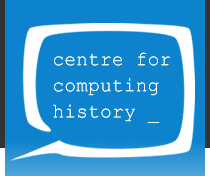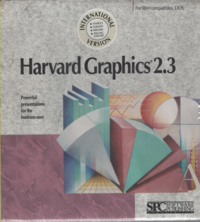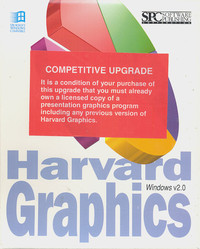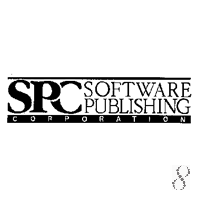Software Publishing Corporation
| Home > Browse Our Collection > Computing Companies > Software Publishing Corporation |
Software Publishing Corporation (SPC) was established in 1980, in Mountain View (CA), by three former Hewlett-Packard employees, Fred Gibbons, Janelle Bedke, and John Page, with an eye to producing packaged software for personal computers like the Apple II. The first software to be launched was the "Personal Filing System" (PFS), a simple database program for Apple II computers which eventually led to the "pfs:" series of products for Apple and Microsoft DOS for IBM PC-compatible computers SPC was the world's ninth-largest microcomputer-software company, with $14 million in 1983 sales. In 1984 IBM and SPC made an OEM agreement on the IBM Assistant Series, a slightly enhanced, but rebranded version of the "pfs:" family of products which IBM intended to sell with its IBM PC computers, promoted with a Chaplin-esque figure getting all of his ducks in a row. In 1985 SPC had achieved $50 million in revenue from the IBM deal, alone. The power of Harvard Presentation Graphics made it extremely popular with DOS PC users, helping to drive SPC's sales revenues to $150 million by 1990. SPC shifted focus to high-end business graphics software, and sold the "pfs:" and related series software to Spinnaker Software in 1991. This move made SPC an essentially one-product company, with dire results. By 1993 the DOS-based Harvard Graphics product accounted for 80% of SPC's revenue and was popular because of its graphical presentation. However, as Microsoft Windows Graphical User Interface (GUI) Windows version 1.0 through Windows 95, became almost ubiquitous this key selling point waned. Although SPC release a Windows 3.0 version of Harvard Graphics, Microsoft's PowerPoint and Lotus Development Corporation's Freelance, usurped its lead. SPC had begun to rebuild its product line with offeringssuch as ActiveOffice, ASAP WordPower, ASAP WebShow, Harvard ChartXL, Harvard Spotlight, Superbase 2.0, and Personal Publisher (which SPC acquired from T/Maker. But in 1994, the firm laid off half its staff and Gibbons stepped down as chief executive. In 1996 SPC was purchased by Allegro New Media, Inc., a New Jersey-based multimedia publisher of interactive CD-ROM software applications. Earlier that year, Allegro had purchased Serif Inc, which produced publishing and graphics software for the Small Office, Home Office (SOHO) market, including PagePlus Home/Office 95, PagePlus 3.0 and DrawPlus 2.0, as well as a variety of clipart and font collections. Allegro believed that the move would expand its product lines and distribution capabilities. Allegro renamed itself Vizacom in late 1996 and began actively marketing its new products; however, in 2001 Vizacom sold Serif back to its original management, and included the licensure to Serif of the Harvard Graphics line of products in the sale. Serif continued to market Harvard Graphics 98 for Windows until 2017, when the product was taken off the market. Products Pfs: Family (popular, because of their simplicity and ease-of-use) pfs:File, a flat-file database; pfs:Write (a word processor), pfs:Plan (a spreadsheet), pfs:Report (reporting software), and pfs:Graph (business graphics software); pfs:Access (for data communications); pfs:Easy Start (a menuing utility), and pfs:Proof (a proofreading utility); pfs:Publisher (Desktop Publishing); pfs:Office (packaged processing, database and spreadsheet). pfs:First Choice for DOS an integrated suite of lighter-weight versions of the pfs: word processing, database, spreadsheet and data communications programs to compete with Microsoft Works. pfs:First Graphics (lightweight business graphics) There was no compatibility between the "pfs:First" series and the "pfs:" series. High End family pfs:Professional Write,( ahigher-powered word processor); pfs:Professional File (a more powerful database, to better compete with dBase), and pfs:Professional Plan (a more powerful spreadsheet, to better compete with Lotus 1-2-3). Starting with the second versions of the Professional trio, the "pfs:" was dropped from the product names, making them, simply, Professional Write, Professional File, and Professional Plan. When all three were installed on the same machine, the separately-purchased products could interact with one another as a sort of office suite. In 1986, SPC released its groundbreaking Harvard Presentation Graphics, one of the first PC applications which allowed users to combine charts, clip art, and text and display fonts into presentation slides. In the 1990’s ActiveOffice, ASAP WordPower, ASAP WebShow, Harvard ChartXL, Harvard Spotlight, Superbase 2.0, and Personal Publisher (which SPC acquired from T/Maker.) Software Products
Magazine Articles About Software Publishing Corporation
|
People Related to Software Publishing Corporation :
|















